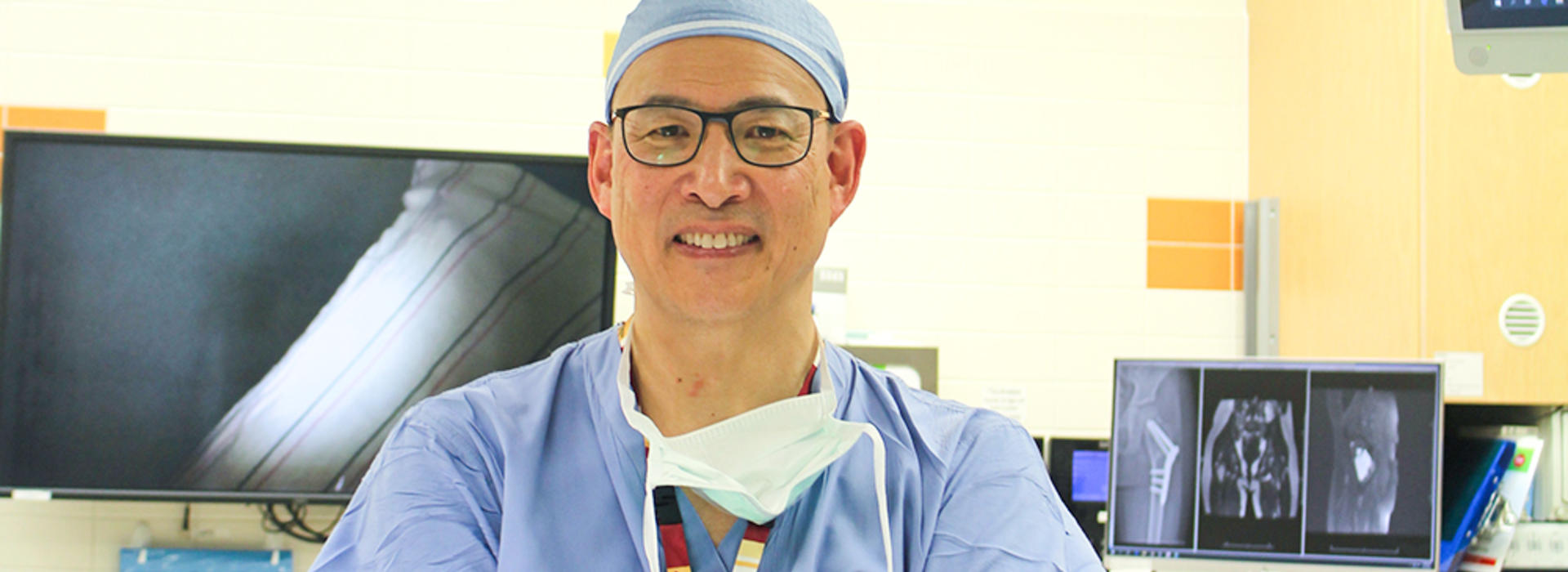
Orthopedic Procedure Prioritization Guides Equitable Distribution of Care During COVID-19 Pandemic
When the global COVID-19 pandemic began, providers everywhere were faced with the need to delay surgical procedures to limit exposure to the virus, conserve scarce protective gear and make room in our hospitals for a potential surge in COVID-19 patients.
“As a healthcare system, we had to postpone elective procedures and limit care to urgent, time-sensitive needs. Limiting healthcare to this extent has never happened before in U.S. medicine,” explained Edward Y. Cheng, MD, a professor in the Department of Orthopedic Surgery at the University of Minnesota Medical School. “As we worked through the situation, the obvious question was, ‘How is a non-urgent surgery defined and would everyone agree on it?”
Professional organizations, including the American Academy of Orthopaedic Surgeons and the American College of Surgeons, rapidly released triage guidelines and best practices to help answer the question of how to prioritize care. However, these guidelines only represented opinions that hadn’t been studied for reliability.
Dr. Cheng and a team of the department’s orthopedic surgeons saw an opportunity to develop an objective tool, backed by science, to provide more equitable patient care. Their classification system was recently published in the Journal of the American Academy of Orthopaedic Surgeons.
“As physicians, we all want to do what’s best for our patients, so having an objective, validated tool helps us to more appropriately prioritize patients,” explained David Matson, MD, a fourth-year resident and co-author of the study.
Dr. Cheng, the primary author, added, “The impetus of the study was to go beyond using expert opinions and recommendations to guide care. We wanted to study, document and support our classification system with science to ensure that triaging was fair and impacted everyone equally.”
To achieve this, Dr. Cheng reviewed all the current procedural terminology (CPT) codes, representing the entire spectrum of orthopedic procedures and assigned them into one of four acuity tiers based on urgency and severity. Since every procedure has its own CPT code, there were hundreds of codes within each tier, which Dr. Cheng condensed into workable categories.
Then, his team convened a group of M Health Fairview orthopedic surgeons to review the classification system and provide feedback. Once the group reached a consensus around the system and acuity tiers, the tool had to be studied for reliability.
“To study the tool statistically, we had to put it into practice,” Dr. Cheng said. “Our surgery schedulers randomly selected 60 past cases and had surgeons, the ‘raters,’ assign them into a tier. This tested inter-rater reliability – to see if everyone placed the case into the same tier.”
The raters had different expertise and experience levels to mimic how the workflow would function in a real setting. In addition, Dr. Cheng’s team wanted to measure intra-rater reliability – a test to see if each rater would classify the cases uniformly over time. To test intra-rater reliability, the raters repeated the same exercise twice, with the second time after two weeks.
Both inter- and intra-rater reliability tests found substantial agreement, proving that the classification system is reliable. Furthermore, it can be used in any location or setting since it’s solely based on the level of surgical necessity and independent of local facility resources.
“In a situation with limited resources, we can fairly, equitably and objectively prioritize care using a tool that’s been shown to be reliable,” Dr. Cheng added.
He also suggests that the classification can be used to ramp surgical volume up or down in situations outside of the COVID-19 pandemic. In any resource-constrained environment, the tool can help determine what “restore phase” the health system is experiencing, which then guides which patients can safely receive care based on their tier assignment.
“The classification system provides a structure to navigate through the ebbs and flows of the pandemic,” said Kyle Morgenstern, MD, a fourth-year resident and co-author. “The tool makes ‘turning the dial’ much easier as resource availability fluctuates.”
While the classification system is being used at M Health Fairview University of Minnesota Medical Center, Dr. Cheng hopes it will be useful to other health systems.
“As physicians, our goal is to provide the best care to the greatest number in a way that is medically necessary,” Dr. Cheng said. “This tool ensures that patients with the most urgent needs are cared for first and is eminently fair, as the decision is blind to who you are. What I really hope for, though, is to never have to use this tool again.”